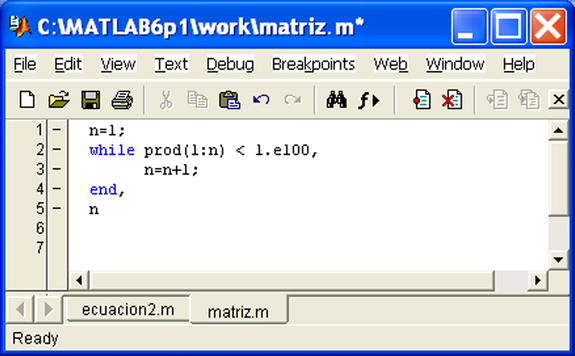
Let's walk through that approach in detail.įirst we take the vertices we got from the isosurface, and create a logical mask of all of the vertices which are outside the cylinder. The first two approaches can be fairly involved in some cases, but the third approach generally isn't too hard to implement.
#F solve matlab how to#
He has already figured out how to compute the surface. It apparently comes from a problem involving polarization of light by crystals. Vyas has a surface which is defined by the following equation.

Recently, there was an interesting question about them on MATLAB Answers.ĭr. (The numbers you get will not be identical, because the numbers are so small they are corrupted by round-off error.We talked about implicit surfaces here back in March.

Thus, the answer is obtained to at least 10 digits. Then take out the ' ' from the file prob.3 and save it. To see the effect, though, we must get more significant digits by using the 'format long' command. If these are not small enough, the tolerance must be reduced using the options variable. We check by evaluating the function, after removing the ' ' from the lines in which f1 and f2 are calculated in prob3.m. We don't know how accurate the results are. Then the ' ' are replaced and the problem run from an initial guess of. These values agree with the hand calculations, so that the functions are computed correctly. Using the same value for x and y has the same pitfall: if x is inadvertently typed in place of y in the M-file, then the error would not be detected with these values. For example, if a line is supposed to be x*x but only x is written, then using a value of 1.0 for x gives the same value and the error is not detected. If we tested with values of 1 and 1 there are several chances for error. Before doing that, however, we need to check that the file prob3.m is typed correctly.

The command is invoked by first setting the initial guess (this also sets the length of the vector of independent variables). This can be done most easily by opening prob2.m, changing it, and saving it with the new name: prob3.m. To solve the same problem, a slightly different M-file is created and called prob3. We first create an M-file that calculates the function, and then invoke the 'fmins' function to minimize it. In MATLAB the 'fmins' function is used to find the minimum of a function of several variables. % the components of the two equations are calculatedįrom the command mode one merely calls the 'fsolve' program with an initial guess, p0. % vector components of p are transferred to x and y for convenience The second way is to use the optimization routines and the 'fmins' command. The first way is to use the fsolve command, which is in the Optimization Toolbox (not all copies of MATLAB have this). There are two main ways to solve multiple equations in MATLAB. Suppose we want to solve the following two equations:

Multiple equations, few unknowns with MATLAB


 0 kommentar(er)
0 kommentar(er)
